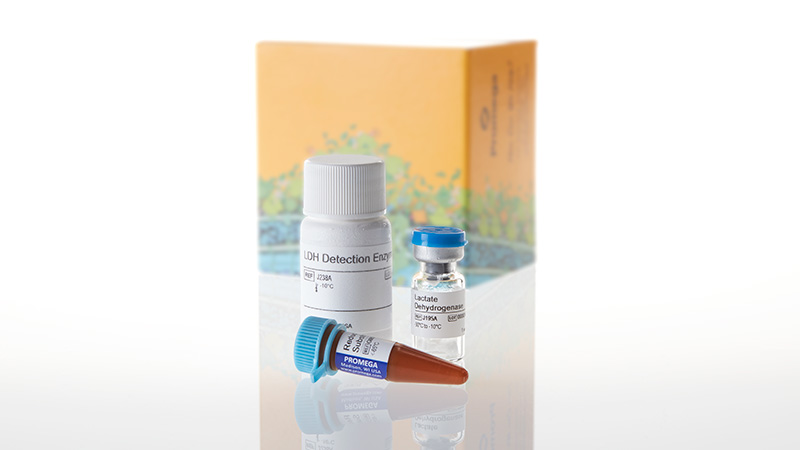인류의 건강과 생명공학 발전을 위해 봉사하는 기업 드림셀
We Serving the Health and Biotechnology of Humanity
We Serving the Health and Biotechnology of Humanity

제품코드 : J2380
제품정보 : Cytotoxicity Assay
The LDH-Glo™ Cytotoxicity Assay is a bioluminescent plate-based assay for quantifying lactate dehydrogenase (LDH) release into the culture medium upon plasma membrane damage. The bioluminescent detection is more sensitive than colorimetric or fluorescent methods, allowing accurate detection of LDH from a small number of cells, including primary cells and 3D cell cultures.
This LDH assay involves removing only a small amount of cell media (2–5µl) from each treated well, allowing you to get more data by sampling the same well over time, and by using the remaining media and cells for other cell-based assays.

"The Promega LDH-Glo™ Assay is a reliable and easy-to-follow kit to use when measuring cell death. We use this in our lab and, compared to others, it really helps us get reliable data. Overall, we would highly recommend this kit."
LDH-Glo Customer


